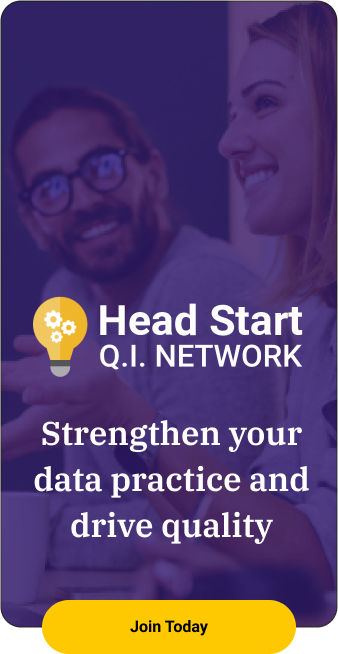Last year we formed a new kind of learning network where early childhood programs lean into their data and use improvement science tools to improve child outcomes. Thirty programs from across the country currently participate and are at various stages on the improvement journey. We’ve just decided to share via blog what we’re learning, so welcome to this first post in an ongoing series!
You could say that members are early adopters, innovators and in many cases visionaries. While member programs have strong track records, there’s a healthy impatience: a sense that we can always do better.
Officially the “Head Start Q.I. Network,” members are re-thinking what quality means. Traditionally, Head Start has emphasized “quality assurance” with an adherence to minimum standards but not necessarily striving beyond that. Now, sitting alogside quality assurance is an expectation of “continuous quality improvement” (CQI). This new standard requires measurement, data and a new set of tools for diagnosing challenges and innnovating new solutions.
We’re connecting internal silos, benchmarking across the network and using visualizations to simplify the work. We’re employing improvement science to address the vexing issues that programs struggle with: chronic absence, family engagement, enrollment, staff recruitment and retention, equity and inclusion. Our members continually question how things could be better.
To appreciate what we’re up to, it’s helpful to think about the overhaul of the Head Start Performance Standards five years ago that codified the current requirements around data and improvement. The architects of the new Standards emphasized that traditional mandates only raise quality so far. Their big, audacious goal was for local programs to step up by deploying better data tools and integrating improvement science into program planning and delivery of services.
In response to this challenge, Head Start leaders have begun experimenting with new data tools and resources. We at the Q.I. Network embrace this journey. Leaders share insights from their improvement work (virtually): diagramming causal issues, mapping processes and starting small, conducting fast trials for hypothesis testing.
Head Start has continually reinvented itself since 1965. Initially begun as a summer kindergarten readiness program, Head Start quickly morphed into an ongoing, part-day preschool program, then added full-day, Early Head Start launched, new teacher accreditation and education standards, etc. The difference with the latest changes, however, is that they aren’t being driven from the top down but from the grassroots up, as program leaders take charge of their data to refine program practices based on rigorous exploration. Local leaders are applying analyses to identify needs, sustain and build on strengths, and to design, test and deploy creative solutions with a granular focus and finesse that could never happen through federal fiat.
Our network shares a sense of community that comes from shared work to make things better. We don’t have all the answers but are learning to ask the right questions. As partners in these conversations, we’ll continuously learn from our journey. We hope you’ll join us as we share the stories of individuals and programs: successes, failures, epiphanies and our ongoing learning.


